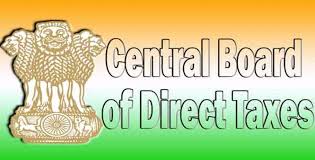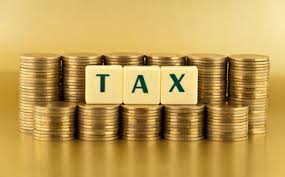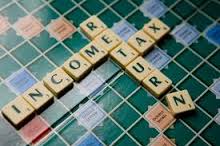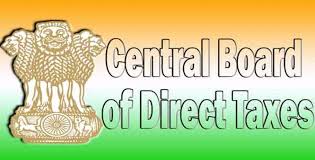

 Government grants further extension in timelines of Income tax compliances
Government grants further extension in timelines of Income tax compliances
The Government has granted further extension of timelines of compliances under Income Tax Act.
It has also announced tax exemption for expenditure on COVID-19 treatment and ex-gratia received on death due to COVID-19. The details are as follows:
A.Tax exemption
Necessary legislative amendments for the above decisions shall be proposed in due course of time.
B.Extension of Timelines
In view of the impact of the Covid-19 pandemic, taxpayers are facing inconvenience in meeting certain tax compliances and also in filing response to various notices. In order to ease compliances to be made by taxpayers during this difficult time, reliefs are being provided through Notifications nos. 74/2021 & 75/2021 dated 25th June, 2021 Circular no. 12/2021 dated 25th June, 2021. These reliefs are:
1.Objections to Dispute Resolution Panel (DRP) and Assessing Officer under section 144C of the Income-tax Act, 1961 (hereinafter referred to as “the Act”) for which the last date of filing under that section is 1st June, 2021 or thereafter, may be filed within the time provided in that section or by 31st August, 2021, whichever is later.
2.The Statement of Deduction of Tax for the last quarter of the Financial Year 2020-21, required to be furnished on or before 31st May, 2021 under Rule 31A of the Income-tax Rules,1962 (hereinafter referred to as “the Rules”), as extended to 30th June, 2021 vide Circular No.9 of 2021, may be furnished on or before 15th July, 2021.
3.The Certificate of Tax Deducted at Source in Form No.16, required to be furnished to the employee by 15th June, 2021 under Rule 31 of the Rules, as extended to 15th July, 2021 vide Circular No.9 of 2021, may be furnished on or before 31st July, 2021.
4.The Statement of Income paid or credited by an investment fund to its unit holder in Form No. 64D for the Previous Year 2020-21, required to be furnished on or before 15th June, 2021 under Rule 12CB of the Rules, as extended to 30th June, 2021 vide Circular No.9 of 2021, may be furnished on or before 15th July, 2021.
5.The Statement of Income paid or credited by an investment fund to its unit holder in Form No. 64C for the Previous Year 2020-21, required to be furnished on or before 30th June, 2021 under Rule 12CB of the Rules, as extended to 15th July, 2021 vide Circular No.9 of 2021, may be furnished on or before 31st July, 2021.
6.The application under Section 10(23C), 12AB, 35(1)(ii)/(iia)/(iii) and 80G of the Act in Form No. 10A/ Form No.10AB, for registration/ provisional registration/ intimation/ approval/ provisional approval of Trusts/ Institutions/ Research Associations etc., required to be made on or before 30th June, 2021, may be made on or before 31st August, 2021.
7.The compliances to be made by the taxpayers such as investment, deposit, payment, acquisition, purchase, construction or such other action, by whatever name called, for the purpose of claiming any exemption under the provisions contained in Section 54 to 54GB of the Act, for which the last date of such compliance falls between 1st April, 2021 to 29th September, 2021 (both days inclusive), may be completed on or before 30th September, 2021.
8.The Quarterly Statement in Form No. 15CC to be furnished by authorized dealer in respect of remittances made for the quarter ending on 30th June, 2021, required to be furnished on or before 15th July, 2021 under Rule 37 BB of the Rules, may be furnished on or before 31st July, 2021.
9.The Equalization Levy Statement in Form No. 1 for the Financial Year 2020-21, which is required to be filed on or before 30th June, 2021, may be furnished on or before 31st July, 2021.
10.The Annual Statement required to be furnished under sub-section (5) of section 9A of the Act by the eligible investment fund in Form No. 3CEK for the Financial Year 2020-21, which is required to be filed on or before 29th June, 2021, may be furnished on or before 31st July, 2021.
11.Uploading of the declarations received from recipients in Form No. 15G/15H during the quarter ending 30th June, 2021, which is required to be uploaded on or before 15th July, 2021, may be uploaded by 31st August,2021.
12.Exercising of option to withdraw pending application (filed before the erstwhile Income Tax Settlement Commission) under sub-section (1) of Section 245M of the Act in Form No. 34BB, which is required to be exercised on or before 27th June, 2021, may be exercised on or before 31st July, 2021.
13.Last date of linkage of Aadhaar with PAN under section 139AA of the Act, which was earlier extended to 30th June, 2021 is further extended to 30th September, 2021.
14.Last date of payment of amount under Vivad se Vishwas (without additional amount) which was earlier extended to 30th June, 2021 is further extended to 31st August, 2021.
15.Last date of payment of amount under Vivad se Vishwas (with additional amount) has been notified as 31st October, 2021.
16.Time Limit for passing assessment order which was earlier extended to 30th June, 2021 is further extended to 30th September, 2021.
17.Time Limit for passing penalty order which was earlier extended to 30th June, 2021 is further extended to 30th September, 2021.
18.Time Limit for processing Equalisation Levy returns which was earlier extended to 30th June, 2021 is further extended to 30th September, 2021.

Here is the analysis of the new section ‘194Q’ with more details:
Section 194Q, applies to any buyer who is responsible for paying any sum to any resident seller for the purchase of any goods of the value or aggregate of value exceeding fifty lakh rupees in any previous year. The buyer, at the time of credit of such sum to the account of the seller or at the time of payment, whichever is earlier, is required to deduct an amount equal to 0.1% of such sum exceeding fifty lakh rupees as income tax.
Finance Act, 2021 has inserted two new sections 206AB and 206CCA which mandates tax deduction (206AB) or tax collection (206CCA) at *a higher rate in the case of specified persons with respect to tax deductions (other than under sections 192, 192A, 194B, 194BB, 194LBC, and 194N) and tax collections.
* The higher rate is twice the prescribed rate or five percent whichever is higher.
“For these sections, specified person means a person who has not filed the return of income for two years in which tax is required to be deducted, for which the time limit of filing return under section 139(1) has expired, and his/her aggregate of tax deducted at source is Rs 50,000 or more in each of these two previous years.”
In nutshell, TDS of Rs 50,000 or more has been made for the past two years but no return of income has been filed, the rate of TDS will be double the specified rate or five percent, whichever is higher.
However, this provision will not be applicable for the transactions where the full amount of tax is required to be deducted, e.g. salary income, payment to a non-resident, lottery, etc. Also, the specified persons will not include a non-resident who does not have a permanent establishment in India.
Additionally, the Finance Act has introduced Section 194Q, which mandates that any person, being a buyer responsible for paying any sum to any seller (being a resident) for purchase of any goods (including capital goods), where the value of such goods, exceeds Rs 50 lakh in any previous year, will be required to pay TDS at the rate of 0.1 percent. In case of non-furnishing of PAN/Aadhaar by deductee, TDS will be charged at the usual rate or five percent whichever is higher.
These new TDS rules will impact the cash flows of non-filers of the income tax return.
To check such non-filers, CBDT has introduced a new tool “Compliance Check for Section 206AB & 206CCA” to ease the compliance burden of the tax deductor.
Under this tool, the deductor can feed the PAN of the deductee on the reporting portal and verify whether any deductee is compliant as per section 206AB of the Act and also whether the individual deductee has linked his/her Aadhar with PAN or not.
The response will be visible on the screen for a PAN search, which can be downloaded in PDF format. For bulk search, the response would be in the form of a downloaded file which can be kept for record.
What will be the result of not deducting/depositing TDS: –
As per section 40(ia) of the Income Tax Laws an amount has been paid to a resident on which TDS is to be deducted but not deducted and if deducted and the same is not deposited before the expiry of the time provided for furnish of ITR under section 139(1) then the 30% of the amount on which TDS is to be deducted and deposited will be added to the income of that person.
This provision will also be applicable to TDS falling under section 194Q of TDS so wherever the provisions of TDS are applicable, TDS must be deposited as the amount of purchase of goods is always very high and 30% of that is added back to the income of the Assessee then the tax on such amount will be very high. So be careful and deduct and deposit the TDS keeping in mind the provision of addition of this 30% to the income.

The tax department has launched the much-awaited new portal of filing income tax return (ITR) — www.incometax.gov.in — on Monday night.
The new e-filing portal (www.incometax.gov.in) is aimed at providing taxpayer convenience and a modern, seamless experience to taxpayers;
New taxpayer friendly portal integrated with immediate processing of Income Tax Returns(ITRs) to issue quick refunds to taxpayers;
All interactions and uploads or pending actions will be displayed on a single dashboard for follow-up action by taxpayer;
Free of cost ITR preparation software available online and offline with interactive questions to help taxpayers fill ITR even without any tax knowledge, with pre-filling, for minimizing data entry effort;
New call center for taxpayer assistance for immediate answers to taxpayer queries with FAQs, Tutorials, Videos and chatbot/live agent;
All key portal functions on desktop will be available on Mobile App which will be enabled subsequently for full anytime access on mobile network;
New online tax payment system on new portal will be enabled subsequently with multiple new payment options using net-banking, UPI, Credit Card and RTGS/NEFT from any account of taxpayer in any bank, for easy payment of taxes.
From pre-filled income tax return forms to quick refunds — the new portal has a tons of features to make your tax filing journey easy and convenient. The aim is to provide a “modern and seamless experience to taxpayers”.
The initiative of the Income Tax department to make the tax portal tax payer friendly and more easy to navigate is applaudable. The videos, FAQ and various tutorials and the ITR preparation software to ease the discomfort of new tax payers who may not be computer savvy is a good start. While its early to comment on the ease of use for which one needs to access the portal, the portal does indicate issuance of quicker tax return processing and faster refunds, which is a welcome step.
The latest features of the new income tax filing portal www.incometax.gov.in are listed below:
1) The new portal will process the the income tax returns immediately, said the Central Board of Direct Taxes. This will help the taxpayers to get the quick refunds of their income tax returns.
2) There will be a single dashboard for all the interactions and pending return. The taxpayers can easily see all their interactions together in a place. This will make following up of pending notices easier and convenient.
3) The taxpayers will get a free interactive software which will guide them to file ITR forms. Now, ITRs 1, 4 (online and offline) and ITR 2 (offline) will be available. “Facility for preparation of ITRs 3, 5, 6, 7 will be made available shortly,” CBDT said.
4) The option of pre-filled ITR forms will be available on the new website. “Taxpayers will be able to proactively update their profile to provide certain details of income including salary, house property, business or profession which will be used in pre-filling their ITR,” the Ministry of Finance said.
5) To answer all your queries while filing ITR forms, there will be call centre for prompt assistance. A chatbot will also be available to help the taxpayer filing their returns along with detailed manual, videos and FAQs.
6) The other functionalities for filing income tax forms, adding tax professionals, submitting responses to notices in faceless scrutiny or appeals will be available on the new e-filing portal.
7) It must be noted that the new tax payment system will be launched on June 18 after the advance tax instalment date, the ministry of finance said.
8) Given the new portal launching and advance tax payment due date falling on June 15, to avoid any inconvenience in the tax payment process to the taxpayer, this will be launched on June 18 2021. However, for all other features/functionalities, the website can be used as soon as launched. Users can still make payment through existing process and file their tax returns on the new portal.
9) “The mobile app will also be released subsequent to the initial launch of the portal, to enable taxpayers to get familiar with the various features,” it further added.
10) Taxpayers and other stakeholders will take some time to familiarize with the various features of new portal. The tax department urged all to remain patient for the initial period after the launch as it will be a major transition in the tax filing system.
Source: www.incometax.gov.in

In view of the adverse circumstances arising due to the severe Covid-19 pandemic and also in view of the several requests received from taxpayers, tax consultants & other stakeholders from across the country, requesting that various compliance dates may be relaxed, the Government has extended certain timelines on Saturday.
In the light of multiple representations received (supra) and to mitigate the difficulties being faced by various stakeholders, the Central Board of Direct Taxes (CBDT) has, under section 119 of the Income-tax Act, 1961(the Act), provided the following relaxation in respect of compliances by the taxpayers:
a) Appeal to Commissioner (Appeals) under Chapter XX of the Act, for which the last date of filing under that Section is 1st April, 2021 or thereafter, may be filed within the time provided under that Section or by 31st May, 2021, whichever is later;
b) Objections to Dispute Resolution Panel (DRP) under Section 144C of the Act, for which the last date of filing under that Section is 1st April, 2021 or thereafter, may be filed within the time provided under that Section or by 31st May, 2021, whichever is later;
c) Income-tax return in response to notice under Section 148 of the Act, for which the last date of filing of return of income under the said notice is 1st April, 2021 or thereafter, may be filed within the time allowed under that notice or by 31st May, 2021, whichever is later;
d) Filing of belated return under sub-section (4) and revised return under sub-section (5) of Section 139 of the Act, for Assessment Year 2020-21, which was required to be filed on or before 31st March, 2021, may be filed on or before 31st May, 2021;
e) Payment of tax deducted under Section 194-IA, Section 194-IB and Section 194M of the Act, and filing of challan-cum-statement for such tax deducted, which are required to be paid and furnished by 30th April, 2021(respectively) under Rule 30 of the Income-tax Rules, 1962, may be paid and furnished on or before 31st May, 2021;
f) Statement in Form No. 61, containing particulars of declarations received in Form No.60, which is due to be furnished on or before 30th April, 2021, may be furnished on or before 31st May, 2021.
The above relaxations are the latest among the recent initiatives taken by the Government to ease compliances to be made by the taxpayers with the aim to grant respite during these difficult times.

The gross GST revenue collected in the month of April is at a record high of Rs. 1,41,384 crore of which CGST is Rs. 27,837 crore, SGST is Rs. 35,621, IGST is ₹68,481 crore (including Rs. 29,599 crore collected on import of goods) and Cess is Rs. 9,445 crore (including Rs. 981 crore collected on import of goods).
“Despite the second wave of COVID-19 pandemic affecting several parts of the country, Indian businesses have once again shown remarkable resilience by not only complying with the return filing requirements but also paying their GST dues in a timely manner during the month,” according to a statement by Ministry of Finance.
The GST revenues during April 2021 are the highest since the introduction of GST even surpassing collections in the last month (March’2021). In line with the trend of recovery in the GST revenues over past six months, the revenues for the month of April 2021 are 14% higher than the GST revenues in the last month of March’2021.
During the month, the revenues from domestic transaction (including import of services) are 21% higher than the revenues from these sources during the last month.
GST revenues have not only crossed the Rs. 1 lakh crore mark during successively for the last seven months but have also shown a steady increase. These are clear indicators of sustained economic recovery during this period.
Closer monitoring against fake-billing, deep data analytics using data from multiple sources including GST, Income-tax and Customs IT systems and effective tax administration have also contributed to the steady increase in tax revenue. Quarterly return and monthly payment scheme has been successfully implemented bringing relief to the small taxpayers as they now file only one return every three months.
Providing IT support to taxpayers in the form of pre-filled GSTR 2A and 3B returns and ramped up System capacity have also eased the return filing process.
During this month the government has settled Rs. 29,185 crore to CGST and Rs. 22,756 crore to SGST from IGST as regular settlement.
The total revenue of Centre and the States after regular and ad-hoc settlements in the month of April’ 2021 is Rs. 57,022 crore for CGST and Rs. 58,377 crore for the SGST.

Keeping minimum change and with the view to minimise compliance burden, The Central Board of Direct Taxation (CBDT) has notified new income tax return forms — ITR-1 to ITR-7, for the Assessment Year 2021-22, the ministry of finance said in a statement on April 1.
In this new ITR form for AY 2021-22, the taxpayers will now have dedicated space in each of the ITR forms — Sahaj (ITR-1), Form ITR-2, Form ITR-3, Form ITR-4 (Sugam), Form ITR-5, Form ITR-6, Form ITR-7 and Form ITR-V to describe their investments, CBDT said.
ITR Form 1 (Sahaj) and ITR Form 4 (Sugam) are simpler Forms that cater to a large number of small and medium taxpayers. Sahaj can be filed by an individual having income up to Rs 50 lakh and who receives income from salary, one house property / other sources (interest etc).
Similarly, Sugam can be filed by individuals, Hindu Undivided Families (HUFs) and firms (other than Limited Liability Partnerships (LLPs) having total income up to Rs 50 lakh and income from business and profession computed under the presumptive taxation provisions.
Individuals and HUFs not having income from business or profession (and not eligible for filing Sahaj) can file ITR-2, while those having income from business or profession can file ITR Form 3.
Persons other than individual, HUF and companies i.e. partnership firm, LLP etc can file ITR Form 5. Companies can file ITR Form 6. Trusts, political parties, charitable institutions etc claiming exempt income under the Act can file ITR-7.
There is no change in the manner of filing of ITR forms as compared to last year, the CBDT said.
Key points :
♦ ITR-1 cannot be filed in case tax has been deducted u/s 194N
As per, Section 194N – TDS 194N is required to be deducted if amount of cash withdrawn exceeds –
from banking company or co-operative bank or post-office from one or more accounts maintained by taxpayer.
If tax has been deducted u/s 194N, a person can file –
♦ TDS deducted u/s 194N cannot be carried forward to subsequent years.
It means Credit for tax deducted u/s 194N can be taken in previous year relevant to Assessment year in which tax has been deducted.
♦ Option has been given to Individual or HUF as per Section 115BAC.
From A.Y 2021-22 option is available to Individual & HUF whether to opt New Scheme or not. This option for lower tax regime, by foregoing certain exemptions and deductions, is given to Assessees to select new scheme-Section 115BAC and are required to file Form-10IE before filing the return u/s 139(1).
♦ Change in Schedule 112A-LTCG from sale of equity share or unit of equity oriented fund on which STT is paid.
Sale price per share/unit now added in Schedule 112A, which was not earlier provided.
♦ Dividend also taxable from A.Y 2021-22- As we know Dividend Income taxable from A.Y 2021-22 in hands of Assessee from A.Y 2021-22 so we are required to give quarterly break-up of Dividend received in order to get relief from interest levied u/s 234C.
♦ Changes in Section 44AB- The threshold limit to get books of account audited increased from Rs 1 crore to 10 crores, if the following conditions are satisfied-